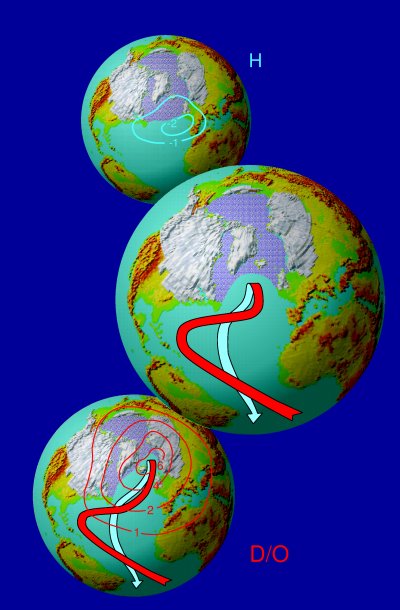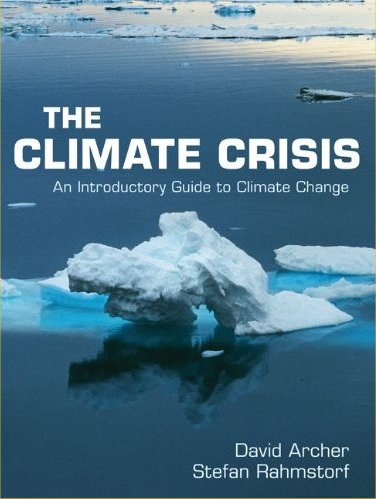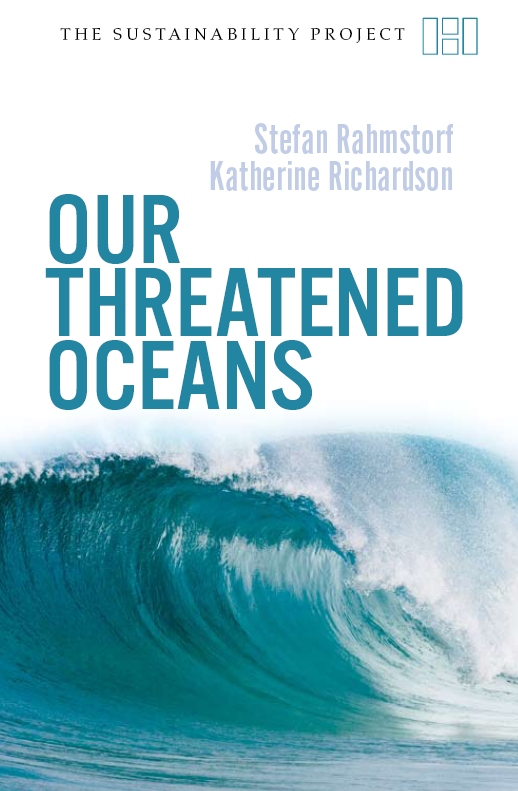Abrupt climate change due to mode switches
between three
circulation modes of the glacial Atlantic
|

 |
Schematic representation of three
modes of operation of the climate system during the Last Ice
Age.
The large Earth in the centre shows the stable
cold (or
"stadial") climate state prevailing during most of the Ice Age.
Below it is the situation during a warm
Dansgaard-Oeschger
(D/O) event, in which the Atlantic conveyor belt temporarily advances
into
the Nordic Seas and a strong warm anomaly develops there
(contours).
The upper globe shows climate during a Heinrich
event,
with collapsed conveyor belt and a cold anomaly over the mid-latitude
Atlantic.
The continental ice cover shown is the
reconstruction
of Peltier, prescribed as a boundary condition in the model simulations.
For a more detailed description of the three
modes, see our
paper: Ganopolski, A. and S.
Rahmstorf,
2001: Simulation of rapid glacial climate changes in a coupled climate
model. Nature, 409, 153-158.
A more popular description is found in our press
release.
This paper is also discussed in a Nature
News & Views by Didier Paillard.
You can watch
a movie of
these events: a D/O event followed by a Heinrich event and another D/O
event.
Mode switches could be caused by an
interesting mechanism
called 'stochastic resonance'. This is analysed in: Ganopolski,
A. and S. Rahmstorf, 2001: Abrupt glacial climate changes due to
stochastic
resonance. Phys. Rev. Let., in press.
|
|














